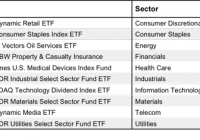Gross Shocks Conventional Wisdom
Bill Gross told investors this week to Beware the Ides of March, or the Ides of any month in 2015 for that matter. When the year is done, there will be minus signs in front of returns for many asset classes. The good times are over. Gross is the legendary bond fund manager who left the company he founded, PIMCO, for a job as a portfolio manager at Janus Global Unconstrained Bond Fund, so most people pay attention when he writes. The prediction came inside the January Investment Outlook for investors. But for the mainstream financial media, he might as well have expelled foul smelling gas at a crowded party. The media quickly pointed out how contrarian his forecast is. For example, the Bloomberg reporter wrote: Gross is putting himself way out on a limb: Not one of Wall Street’s professional forecasters predict the S&P 500 will drop in 2015. Their average estimate calls for an 8.1 percent rise. And while the global economy looks weak, the U.S. has been heating up, with GDP up 5 percent in the third quarter. Of course, he forgets that mainstream financial experts and economics have failed to see every recession for the past century, especially the latest. They have failed because their business cycle theory asserts that recessions and the stock market collapses that precede them are random events. In other words, @#$% happens! So while insisting that business cycles are random events and by definition unpredictable, they continue to insist they can predict them! Gross makes one mistake that shows the bad influence behavioral finance has inflicted on him. He wrote, Manias can outlast any forecaster because they are driven not only by rational inputs, but by irrational human expressions of fear and greed. Stock and bond market “bubbles” are not manias; humans are not irrational with their money and the current market levels don’t illustrate greed or fear. As my forecasts show, the stock market reflects historically high profits plus greater tolerance for risk by investors. And the bond market is responding rationally to the Fed’s loose monetary policy. Fortunately, Gross doesn’t follow mainstream economics. His rationale comes from the “debt super cycle.” Gross attributes the theory to the research and investment advisory firm Bank Credit Analyst, but the cycle has been a major theme of the Bank for International Settlements for years. You can find a good intro in Claudio Borio’s The financial cycle and macro economics: What have we learnt? In short, the theory says that debt increases when central banks pump money into the economy through artificially low interest rates and open market operations, that is, buying bonds, also known as quantitative easing. Much of the debt increases the value of capital that has been used as collateral on loans and makes further borrowing on the same collateral possible. Credit continues to expand, asset prices rise and GDP increases as part of the expansion phase until debt service burdens become too great for businesses or households to bear, causing them to cut back on spending. As a result, asset prices fall and banks demand more collateral for outstanding loans. Some companies default and the financial system spirals downward, taking the economy with it. The latest debt super cycle extended almost 20 years peak-to-peak, from about 1989 to 2007. Business cycles last up to 8 years, but when a recession coincides with a peak in the debt cycle, it’s much more severe. There is a lot of truth in the debt super cycle theory. But it doesn’t explain why debt service becomes unbearable. After all, if asset prices are increasing and the economy is growing, debt service should become easier. The debt theory needs the Austrian business-cycle theory to make it whole. Debt service becomes a burden when sales fall in the capital goods sector because sales are soaring in the consumer goods sector. This is Hayek’s Ricardo Effect kicking in. However, the debt theory helps flesh out some of the financial aspects of the ABCT. So what does Gross advise investors to do? He recommends buying Treasuries and high quality corporate bonds. He cautions that rising interest rates could hurt such investments, but if the debt cycle theory is correct, that won’t happen in 2015. Only contrarians like Gross make money when the market morphs from a bull to a bear.
